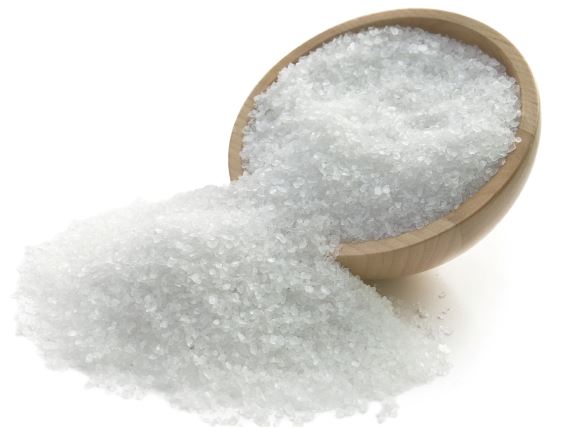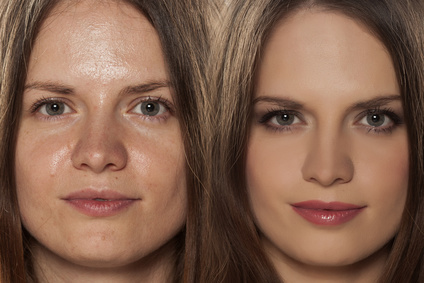
Two Types Of Silica Are Clearly Defined
There has been confusion about the ingredient silica being used in mineral makeup or anything cosmetic. Again like so many other types of information on the internet, somewhere along the line silica information gets skewed. Certain "silica" powders were confused with another, or considered one in the same and all of a sudden there are big warnings with alarm bells about avoiding silica in all mineral makeup and skincare products at all cost because it will give you lung disease and cancer.
Now silica is not an ingredient we opted to use in our mineral makeup, however we felt it is important to get accurate information to the consumer of beauty products since it only serves to scare unnecessarily when misinformation spreads like wildfire.
Crystalline Silica
This is the version that is used in grinding, sandblasting, masonry projects, etc, and is highly abrasive. It is also an ingredient that if inhaled causes severe lung inflammation, can be fibrogenic, (essentially scarring) and can cause cancer and a chronic, sometimes fatal disease known as silicosis. This type of silica should never be found or used in mineral makeup or cosmetics of any kind.
Hydrated Silica
This is another version which is a derivative of silicon dioxide. It's uses are in toothpastes, anti caking agent, bulking agent, and for absorption. It is a mild abrasive which is why you will find it in toothpaste near the top of the ingredient list for getting your teeth pearly white, and it also makes a great gel which is why you'll find this in some liquid foundation products.
Amorphous Silica
Essentially this is the same as hydrated silica, it just can be found by this name as well which spurs confusion by many. Both forms are typically synthetically reproduced and not taken from the earth, although it does make up 12% of the earth's surface. It's uses are the same as hydrated silica and it is why you'll find this form of silica in mineral makeup products to assist with moisture and oil absorption. Also it is not shown to cause silicosis.
Amorphous Hydrated Silica (by same name) is not suspected as an environmental toxin and has not been linked to being a carcinogen by the IARC (International Agency for Research on Cancer).
Worries About Contamination With Crystalline Silica
To clarify precisely the differences, the substance known as silicon dioxide has many sides. Silicon dioxide includes both naturally occurring and synthetic silicas. All silicas are silicon dioxide! So no confusion there, but if you read Wikipedia info you'll feel like pulling your hair out. Their information is excellent but very involved and difficult to disseminate and may be why we are seeing confusion on some of the beauty blogs.
What is also very frustrating, is typically the cosmetic ingredient label just reads as "silica" whereby the consumer has no idea what version it is and creates worry that it could be the dangerous kind without clarification. This is a serious mistake made on the part of the mineral makeup and cosmetic companies using vague labeling practices. Accurate information clears confusion and gives assurances to consumers their products are safe. It would be better if it was presented as Silica (amorphous, hydrated) on the label's ingredient declaration.
Fact is, naturally occurring silicon dioxide has a crystalline structure whereas synthetic amorphous silica (SAS) is non-crystalline. So you can determine the likelihood of contamination with crystalline silica is about zero since amorphous silica has been created synthetically. However, when the information is fused together under the fact that all silicas are silicon dioxide, therefore they must be alike, we still must always look at the finished product and it's design for use.

Why We Elected Not To Use It
It is basically for the reasons listed above. It is a mild abrasive so it can be irritating to skin depending especially on it's location on the ingredient list. Some women still get frustrated when buying mineral powders since they have made sure they do not contain bismuth oxychloride, yet they are still experiencing sensitivity when they use their mineral makeup products. Silica would then be another ingredient they may want to check for.
This is also a desiccant which is used in packaging of bulking materials to keep dry powders or OTC drugs and vitamins from holding moisture by absorbing it within the enclosed jar. This helps maintain freshness.
For this reason it makes for a great ingredient for absorbing excess perspiration and oils produced by the skin, but due to it being so excellent in it's job, when tested, we found that more often than not, women felt as though the moisture was being sucked right out of their skin.
If you have a really oily skin type then hydrated silica is an excellent choice, but anything other than this definable skin type, this is an ingredient that should be avoided especially by women with aging, dry skin. The feel and comfort of the skin will be less than desirable. It does offer some blurring properties, plus it is very inexpensive.
However, there are many other ingredients which economically are more expensive, but will not be irritating, have superior blurring capacity, and actually offer a beautiful lubricious quality, leaving skin soft as velvet, never cakey or dried out. These are the mineral makeup ingredients we opted to use in our mineral makeup.
